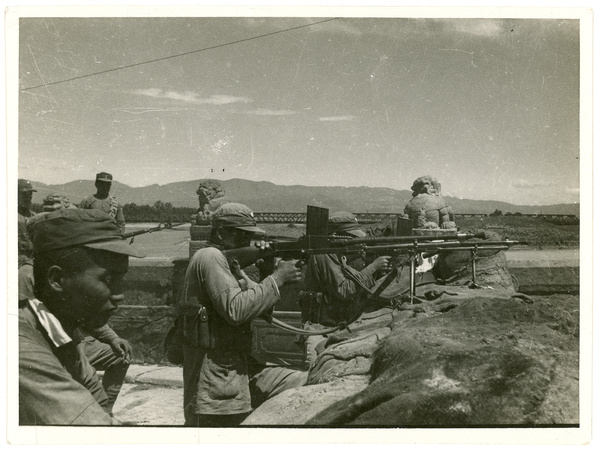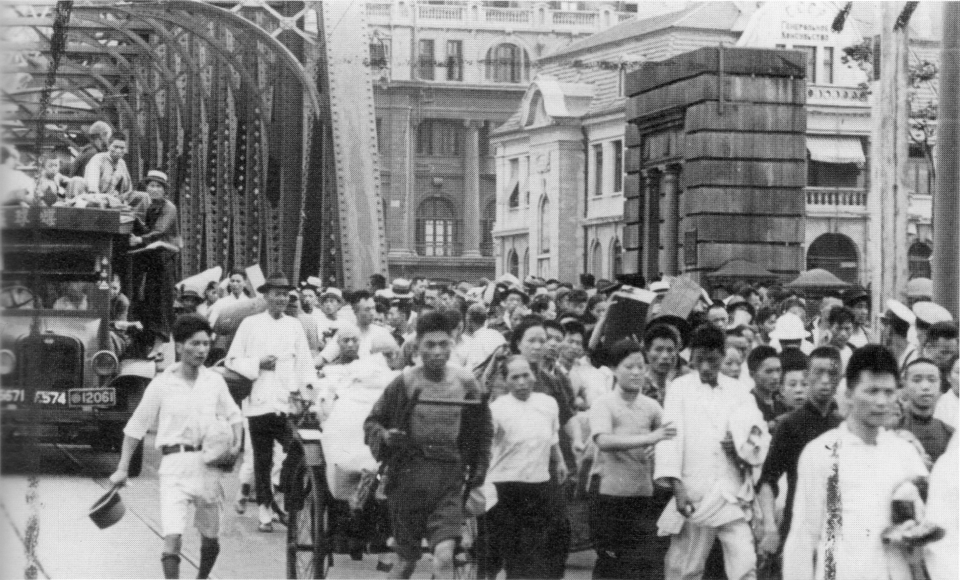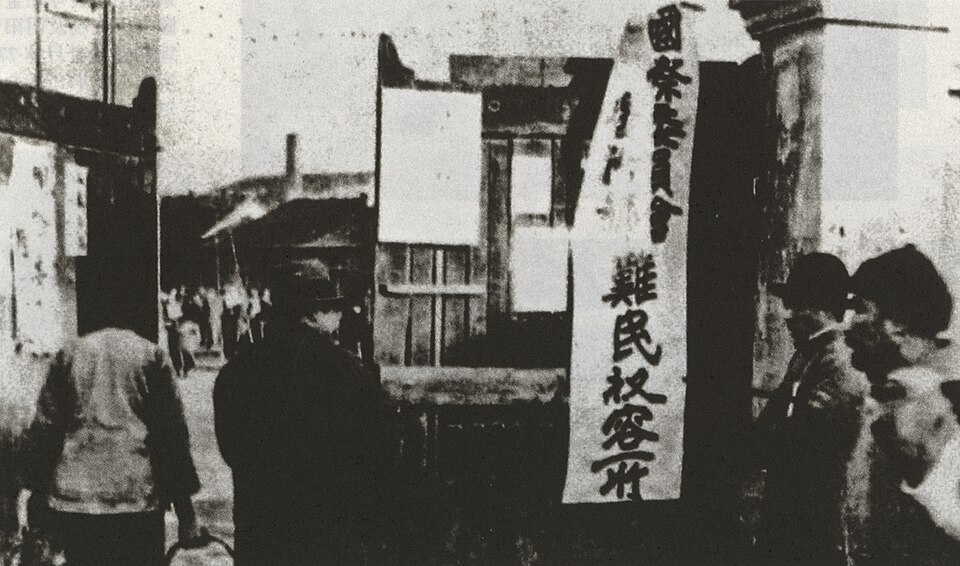IB Syllabus focus:
'The outbreak of the Sino-Japanese War, including preceding events and immediate triggers.
Major battles, strategies, and turning points during the war.
The human and material costs of the war for both Japan and China.'
The Sino-Japanese War (1937-1945), also known as the Second Sino-Japanese War, was a major conflict in the 20th century that profoundly affected East Asia's geopolitical landscape and had far-reaching implications for both Japan and China.
Outbreak of the Sino-Japanese War
Preceding Events
Manchurian Incident (1931): Japan’s invasion and subsequent establishment of the puppet state of Manchukuo highlighted its imperialist ambitions.
Marco Polo Bridge Incident (1937): Occurring near Beijing, a clash between Chinese and Japanese troops over an alleged missing Japanese soldier. This seemingly minor confrontation intensified due to the existing political and military tensions.

Chinese troops of the Nationalist 29th Army with ZB-26 light machine guns stand on Lugou (Marco Polo) Bridge during the July 1937 incident that escalated into full-scale war. The image anchors the setting—bridge, rail line, and defenses—described in the outbreak narrative. Source
Japanese Expansion: Japan's military presence in Manchuria and the increasing influence in northern China aggravated Chinese nationalism and heightened mistrust.
Chinese Nationalism: The rising tide of nationalism in China fostered a spirit of resistance against Japanese encroachments.
Immediate Triggers
Escalation at Marco Polo Bridge: Neither China nor Japan were willing to compromise, turning this incident into a large-scale confrontation. Reinforcements from both sides turned the skirmish into a full-fledged conflict.
Ineffectual Diplomacy: Deteriorating diplomatic relations made negotiations between the two nations difficult. Japan's refusal to recognise Chiang Kai-shek's Nationalist government further strained diplomacy.
Major Battles and Strategies
Battles
Battle of Shanghai (1937): A brutal urban warfare scenario. The Japanese hoped for a quick victory to intimidate China into submission. Despite Chinese resistance, Japan captured the city after three months.

Residents cross Waibaidu (Garden) Bridge into the Shanghai International Settlement to escape naval bombardment during the Battle of Shanghai, September 1937. The photograph conveys the intensity of urban fighting and the immediate humanitarian pressure on civilians. Source
Battle of Nanjing (1937): The capital of Nationalist China. After its fall, the subsequent Nanjing Massacre saw mass atrocities by Japanese soldiers against Chinese civilians and unarmed troops.

Refugee shelters created by the International Committee for the Nanjing Safety Zone provided limited protection and relief to thousands after the city’s fall in December 1937. The photograph illustrates the scale and organization of civilian refuge referenced in discussions of the massacre’s aftermath. Source
Battle of Taierzhuang (1938): Despite being outnumbered and ill-equipped, Chinese forces delivered a significant defeat to the Japanese army, marking a morale boost for the Chinese.
Battle of Wuhan (1938): A massive six-month campaign. Japan sought to capture this strategic city to control the Yangtze River and potentially bring a swift end to the war. They eventually captured Wuhan, but not without significant losses.
Strategies
Attrition Warfare: Both nations tried to bleed the other dry. Japan hoped that by inflicting massive casualties, China would capitulate.
Japanese Combined Arms: Japan relied on superior coordination between its infantry, artillery, and aviation units.
Chinese Guerilla Warfare: In areas where the regular army was lacking, Chinese resistance employed guerrilla tactics, causing significant Japanese casualties and disrupting supply lines.
Turning Points
Xuzhou Campaign (1938): China's successful defence of Xuzhou halted Japanese northern advancements and safeguarded the wartime capital of Chongqing.
Battle of Changsha (1939 & 1941): The Chinese successfully defended the city in multiple engagements, proving that they could resist Japan's best efforts.
1941 Events: The Japanese decision to attack Pearl Harbor expanded the scope of the war and drew in the Allies, leading to a diversion of Japanese resources away from China. This move was part of Japan's broader strategy in the Pacific War.
Human and Material Costs
Japan
Casualties: The war was costly for Japan, with approximately 1-1.5 million military casualties, not to mention the wounded or traumatised.
Economic Strain: The prolonged conflict drained Japan’s financial and material resources. This was compounded by embargoes imposed by Western powers due to Japan's aggressive actions.
Diplomatic Isolation: Global condemnation, especially concerning the Nanjing Massacre, led to Japan becoming increasingly isolated from major world powers.
China
Casualties: China bore the brunt of the war, with estimates of 7-16 million casualties, a mix of military personnel and civilians. Countless others were displaced from their homes.
Infrastructure Damage: Bombing raids and land battles resulted in significant destruction in many Chinese cities.
Economic Repercussions: Industries were uprooted from the coastal regions and relocated to the west to avoid Japanese control, leading to massive economic disruptions.
Aftermath and Significance
The war played a monumental role in shaping the futures of both nations. For China, the conflict was instrumental in fostering a stronger sense of nationalism and unity, especially between the Communists and the Nationalists. Japan, on the other hand, saw the war as a prelude to its broader ambitions in Asia and the Pacific, setting the stage for its involvement in World War II. The legacy of this war still casts a shadow over Sino-Japanese relations to this day. The long-term consequences also influenced the 1905 Revolution in Russia, highlighting the interconnectedness of global conflicts.
FAQ
Japan's aggression towards China was driven by a mix of ideological, economic, and strategic reasons. Japan sought to establish the "Greater East Asia Co-Prosperity Sphere", a vision where Asia would be united under Japanese leadership. This idea was rooted in a combination of nationalism and a sense of racial superiority. Economically, Japan eyed China's vast resources, especially after facing economic constraints in the aftermath of the Great Depression. Strategically, controlling China would provide Japan with a buffer against Soviet Russia and also reduce Western influence in the region. Thus, Japan viewed dominance over China as essential for its imperial ambitions and its vision for a new Asian order.
Despite their longstanding ideological and political differences, the Communist Party of China (CPC) and the Chinese Nationalists (KMT) formed a tenuous alliance, often termed the "Second United Front", to combat Japanese aggression. This cooperation was based on the principle of "resisting the Japanese first and postponing civil conflict". Both parties recognised the existential threat posed by Japan and decided to pool their resources. While the KMT bore the brunt of frontline warfare, the CPC engaged in guerrilla operations and consolidated its power in the hinterlands. However, mutual suspicions persisted, and both parties used this period to prepare for an inevitable showdown after the external threat had been dealt with.
The Chinese civilian response to Japanese occupation was multifaceted. While there was widespread resentment and passive resistance against the Japanese due to atrocities and the general hardships of occupation, some segments of the population collaborated with the Japanese, either out of fear, desire for self-preservation, or the hope of achieving personal or regional benefits. Grassroots resistance, such as espionage and sabotage, was common. The "Three Alls Policy" ("Kill All, Burn All, Loot All") adopted by the Japanese in certain areas also provoked outrage and further resistance among the civilian population. Overall, while reactions varied, the majority of Chinese civilians remained deeply opposed to Japanese occupation.
Yes, several international bodies and countries tried to mediate or condemn the actions during the initial stages of the war. The most notable was the League of Nations. Following Japan's invasion of Manchuria in 1931, the League commissioned the Lytton Report to investigate. The report condemned Japan's actions, leading to Japan's withdrawal from the League. However, beyond condemnation, the League was unable to enforce any real sanctions or penalties. Additionally, the United States, while not directly intervening, expressed its disapproval through policies like the Stimson Doctrine, which refused to recognise territories acquired by force. However, significant military or economic interventions by foreign powers were largely absent during the early stages of the conflict.
The Marco Polo Bridge Incident is significant as it acted as a flashpoint in the already tense relations between Japan and China. While the incident began as a minor skirmish over an alleged missing Japanese soldier, it rapidly escalated because of underlying issues. Both nations had been in a state of undeclared conflict since Japan's invasion of Manchuria in 1931. The Marco Polo Bridge Incident, given the location's proximity to Beijing, signalled to both nations the other's unwillingness to back down. The incident’s escalation showcased the fragility of Sino-Japanese relations, making it a catalyst that transitioned their strained relationship into open warfare.
Practice Questions
The major battles in the Sino-Japanese War played pivotal roles in determining the trajectory of the conflict. The Battle of Shanghai showcased China's determination to resist Japanese aggression, setting the tone for the prolonged nature of the war. Following this, the Battle of Nanjing led to international condemnation of Japan due to the Nanjing Massacre, shifting the diplomatic balance. Furthermore, the successful defences of Xuzhou and Changsha by Chinese forces proved they could challenge Japan's military might. These battles not only highlighted the resolute nature of both sides but also underlined the strategic importance of urban centres in influencing war outcomes.
The distinct strategies employed by China and Japan were crucial in shaping the war's progression. Japan's reliance on combined arms tactics, coordinating infantry, artillery, and aviation, aimed to leverage its technological advantage and achieve rapid victories. In contrast, China, often outmatched in open battlefields, utilised guerrilla warfare to level the playing field. This approach bogged down Japanese troops and disrupted their supply lines. While Japan sought quick decisive battles to demoralise and subdue the Chinese, China's strategy was rooted in a war of attrition, aiming to drain Japanese resources and morale. The interplay of these strategies prolonged the conflict and ensured neither side could achieve an easy victory.

